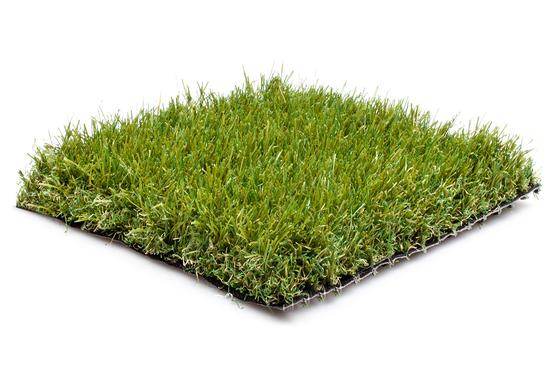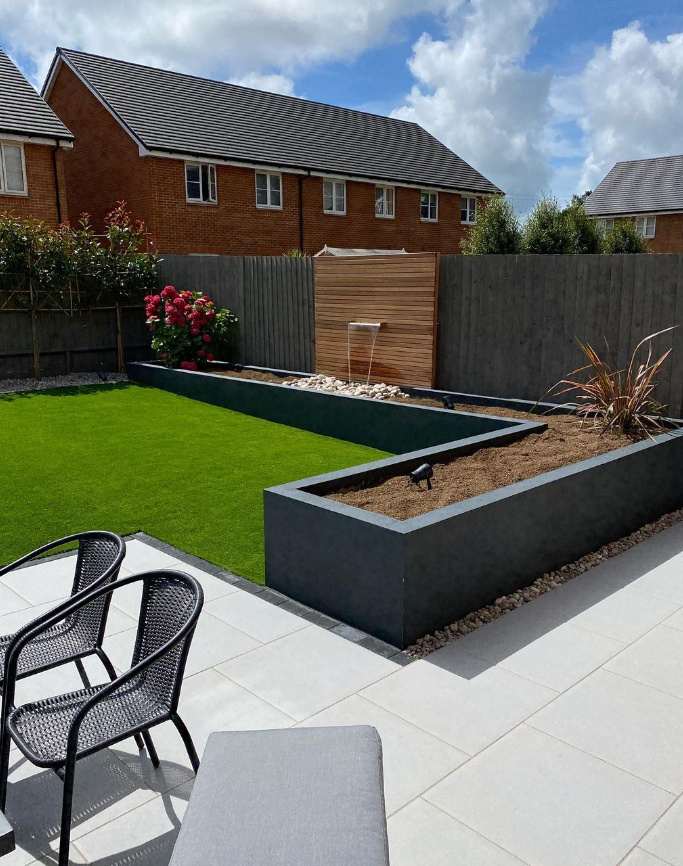
5 Garden Ideas to Try This National Gardening Week
National Gardening Week isn’t just a date in the diary—it’s a brilliant excuse to give your outdoor space a bit of extra love. Whether your garden's big, small, or somewhere in between, there are always easy gardening ideas that can freshen things up without a whole lot of fuss.
This year, being celebrated from 28th April to 4th May 2025, why not try a few tweaks that don’t just look great, but actually do some good too? From supporting wildlife to laying down artificial grass in tired spots, we’ve rounded up five garden improvement ideas that are simple, budget-friendly, and perfect for all DIY skill levels.
You don’t need fancy tools or hours to spare—just a little inspiration and a spot of enthusiasm!
1. Create a Wildlife-Friendly Corner

Giving wildlife a little corner of your garden to call home can make a surprisingly big difference—and it’s one of those DIY garden projects that feels good from day one. Whether you’ve got hedgehogs rustling about or bees on the lookout for nectar, creating a space where they feel safe and welcome tends to bring the whole garden to life. It’s a gentle way to support the environment, and frankly, it makes things more interesting to watch.
Here are a few quick ways to start turning your garden into a bit of a haven:
-
Hang a bird feeder or two where it’s easy to spot visiting robins, finches, and starlings.
-
Add an insect hotel—you can buy one or make it from old wood and sticks.
-
Pop in a shallow water dish for birds and bees to sip from (especially in summer).
-
Plant native shrubs or wildflowers for food and shelter.
-
Leave a log pile in a quiet corner—ideal for insects and hedgehogs alike.
2. Start a Mini Herb or Veggie Patch

If you’ve ever dreamed of growing your own food—but weren’t sure where to start—this is your sign to give it a go. You don’t need a huge garden or loads of know-how. In fact, a sunny patio, a few containers, and a handful of low-fuss herbs are often enough. Starting a mini herb or veggie patch tends to be one of those DIY garden projects that’s fun, surprisingly simple, and genuinely useful. It’s something the whole family can get involved in, too.
Here’s how to get going:
-
Pick a sunny spot—herbs and most veggies love the light.
-
Choose beginner-friendly plants like basil, mint, chives, or lettuce.
-
Use containers or grow bags if you’re short on space.
-
Fill with peat-free compost for a more eco-friendly option.
-
Water regularly and snip often—cutting encourages new growth.
It’s a great little project for National Gardening Week and gives you fresh, fragrant ingredients just a few steps from your kitchen.
3. Add Colour with Pollinator-Friendly Flowers

If your garden’s looking a bit bare or just missing that wow factor, planting for pollinators is an easy fix. It’s colourful, low effort, and helps bees, butterflies, and other pollinators do what they do best. The trick? Choose flowers they love—and that thrive across the seasons. That way, your space stays lively for longer, and you get a garden that looks good while doing some good too.
Here are a few flower ideas, grouped by season:
Spring:
-
Crocus
-
Wallflowers
-
Pulmonaria
Summer:
-
Lavender
-
Echinacea
-
Foxglove
-
Catmint
Autumn:
-
Sedum
-
Michaelmas daisy
-
Helenium
Mix a few from each season, and you’ll have colour—and buzzing visitors—from early spring right through to autumn. It’s a smart step for anyone after a low-maintenance garden with year-round appeal.
4. Use Artificial Grass to Refresh Tired Lawn Areas

Some patches of lawn just never quite recover—too much shade, too many football matches, or just the wrong soil. Rather than constantly re-seeding or battling brown spots, switching to artificial grass can be a smarter long-term move. It’s one of those garden improvement ideas that’s gained proper traction—and not without reason.
Artificial grass stays green all year round, doesn’t turn to mud in the rain, and needs barely any upkeep. It’s particularly handy if you’ve got pets, kids, or just don’t fancy mowing every weekend.
Here are a few places where it tends to work really well:
-
Shady corners where real grass struggles
-
Balconies and roof terraces that need softening up
-
Play areas where safety and clean feet matter
-
Garden paths that need a neat, defined look
-
Around outdoor seating to bring everything together
This kind of low-maintenance garden solution doesn’t just save time—it also keeps things looking tidy without fuss. And with the right quality, it feels good underfoot too.
5. Design a Relaxing Outdoor Seating Area

Creating a comfortable place to sit outside can really change how you use your garden—whether it's for sipping tea, reading a book, or just soaking up some sun. And you don’t need to spend loads. With a few clever choices, you can turn even a small patio into a proper spot to unwind.
Start with the basics: pick a level area with decent light, then think about what’ll make it feel cosy. Shade is key, especially in warmer months, and adding texture with cushions or outdoor rugs gives it that ‘indoor-outdoor’ feel. A bit of privacy—like a pergola, trellis or tall plants—goes a long way too.
Here’s a quick table to compare design extras with budget-friendly swaps:
|
Design Tip |
Budget-Friendly Option |
|
Pergola for shade |
Garden parasol or sail cloth |
|
Outdoor sofa set |
Upcycled wooden pallet seating |
|
Decorative lighting |
Solar-powered fairy lights |
|
Outdoor rug |
Waterproof picnic blanket |
A little comfort makes all the difference—and turns your space into a place you’ll actually use.


